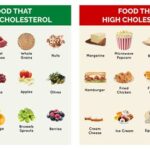
Orthorexia nervosa, an eating disorder characterized by an obsession with healthy eating, is gaining increased recognition as a distinct and potentially harmful condition. Experts caution that what starts as a well-intentioned pursuit of optimal health can devolve into a restrictive and anxiety-ridden pattern, negatively impacting physical and mental well-being.
Orthorexia differs from anorexia and bulimia, which focus primarily on quantity of food and weight, by centering on the perceived quality and purity of food. While those with anorexia might restrict calories to achieve a low weight, individuals with orthorexia fixate on avoiding foods they deem unhealthy, often adhering to increasingly narrow dietary rules.
“Orthorexia is really an obsession with healthy eating, and it’s not officially recognized as an eating disorder in the DSM-5,” explains Dr. Wendy Oliver-Pyatt, Chief Medical Officer of Within Health. However, she adds, “it’s on the radar of eating disorder professionals.”
The rise of social media and diet culture has contributed to the growing prevalence of orthorexia, as individuals are bombarded with often-misleading information about nutrition and health. This can lead to a rigid and inflexible approach to eating, where anxiety and guilt are triggered by deviating from self-imposed dietary restrictions.
Distinguishing Healthy Eating from Orthorexia:
It is crucial to differentiate between a genuine commitment to healthy eating and the pathological obsession that defines orthorexia. Healthy eating involves making informed food choices based on nutritional guidelines, while maintaining flexibility and balance. Orthorexia, on the other hand, is characterized by:
- Obsessive focus: Preoccupation with food choices dominates thoughts and daily life.
- Rigid rules: Adherence to strict and inflexible dietary rules, often based on subjective notions of “clean” or “pure” eating.
- Anxiety and guilt: Significant distress and self-criticism when dietary rules are broken.
- Social isolation: Difficulty eating with others or participating in social events due to food restrictions.
- Compromised well-being: Negative impact on physical health, mental health, and social functioning.
The Roots and Rise of Orthorexia:
The term “orthorexia nervosa” was coined in 1997 by Dr. Steven Bratman, who initially described it based on his own experiences with restrictive eating. While not yet officially recognized in the Diagnostic and Statistical Manual of Mental Disorders (DSM-5), the diagnostic tool used by mental health professionals, orthorexia is increasingly acknowledged within the eating disorder field.
Several factors contribute to the development of orthorexia:
- Diet Culture: Pervasive messages about the “right” way to eat fuel anxieties around food choices and promote restrictive diets.
- Social Media: Platforms like Instagram and TikTok often showcase idealized images of “healthy” eating, creating unrealistic expectations and promoting orthorexic behaviors.
- Underlying Anxiety: Orthorexia can be a manifestation of underlying anxiety disorders, with food rules serving as a means of control and reducing uncertainty.
- Perfectionism: Individuals with perfectionistic tendencies may be more prone to developing orthorexia, as they strive for unattainable standards of dietary purity.
Signs and Symptoms of Orthorexia:
Recognizing the signs and symptoms of orthorexia is crucial for early intervention and treatment. These may include:
- Compulsive Checking of Ingredients: Spending excessive time reading food labels and researching ingredients, often to identify hidden sources of “unhealthy” substances.
- Increased Restriction: Gradually eliminating more and more foods or food groups from the diet based on perceived health risks.
- Dramatic Weight Loss: While not always the primary goal, significant weight loss can occur as a result of severe dietary restrictions.
- Nutritional Deficiencies: Restricting food groups can lead to deficiencies in essential vitamins and minerals, impacting physical health.
- Fear of Eating Out: Avoiding restaurants or social gatherings where food choices are limited or unknown.
- Distress When “Unhealthy” Foods are Eaten: Experiencing significant anxiety, guilt, or shame after consuming foods deemed “unhealthy.”
- Judgment of Others’ Eating Habits: Criticizing or judging the food choices of others, often based on their own rigid dietary beliefs.
- Preoccupation with Food: Spending a significant amount of time thinking about food, planning meals, and worrying about what to eat.
- Feeling of Moral Superiority: Deriving a sense of self-worth from adhering to a “healthy” diet and viewing others who eat differently as less disciplined or virtuous.
- Impairment in Social, Occupational, or Academic Functioning: Dietary restrictions interfere with daily life, making it difficult to maintain relationships, perform at work or school, or engage in enjoyable activities.
- Body Image Concerns: Although not the central focus, body image concerns can sometimes accompany orthorexia, particularly if weight loss becomes a secondary goal.
The Dangers of Orthorexia:
Orthorexia can have serious consequences for both physical and mental health.
- Physical Health Risks: Restrictive eating can lead to malnutrition, weakened immune system, digestive problems, hormonal imbalances, and other health complications.
- Mental Health Risks: Orthorexia is associated with anxiety, depression, social isolation, and a decreased quality of life. The constant preoccupation with food can be exhausting and debilitating.
- Social and Emotional Impact: The rigidity and inflexibility of orthorexia can strain relationships with family and friends, making it difficult to participate in social activities and enjoy life.
Seeking Help and Treatment:
If you or someone you know is struggling with orthorexia, it is important to seek professional help. Treatment typically involves a combination of:
- Therapy: Cognitive Behavioral Therapy (CBT) and other forms of therapy can help individuals challenge their rigid food rules, manage anxiety, and develop a more balanced relationship with food.
- Nutritional Counseling: A registered dietitian can provide guidance on developing a healthy and sustainable eating plan that meets nutritional needs without being overly restrictive.
- Medical Monitoring: Medical professionals can monitor physical health and address any nutritional deficiencies or other health complications.
“If someone’s overly concerned about their food, excessively preoccupied, and it’s interfering with their day-to-day living, that’s a red flag,” says Amy Goldsmith, a registered dietician and founder of Kindred Nutrition.
Moving Towards a Healthier Relationship with Food:
Recovering from orthorexia requires a shift in mindset and a willingness to challenge deeply ingrained beliefs about food and health. Here are some strategies for developing a healthier relationship with food:
- Challenge Rigid Rules: Identify and challenge inflexible dietary rules, gradually introducing a wider variety of foods into the diet.
- Practice Intuitive Eating: Learn to listen to your body’s hunger and fullness cues, rather than relying on external rules or restrictions.
- Focus on Nourishment, Not Perfection: Shift the focus from achieving “perfect” health to nourishing your body with a variety of wholesome foods.
- Cultivate Self-Compassion: Practice self-compassion and acceptance, recognizing that it is okay to deviate from dietary rules occasionally.
- Limit Social Media Exposure: Reduce exposure to social media accounts that promote restrictive diets or unrealistic ideals of “healthy” eating.
- Seek Support: Connect with friends, family, or support groups to share your experiences and receive encouragement.
The Importance of Awareness and Education:
Raising awareness about orthorexia and promoting a more balanced approach to eating is crucial for preventing the development of this harmful condition. By educating individuals about the risks of restrictive diets and the importance of mental health, we can create a culture that supports a healthy and sustainable relationship with food.
Frequently Asked Questions (FAQ):
1. How is Orthorexia different from other eating disorders like Anorexia and Bulimia?
While all three are eating disorders, their primary focus differs. Anorexia nervosa and bulimia nervosa are primarily concerned with the quantity of food consumed and body weight. Individuals with anorexia severely restrict calories, while those with bulimia engage in binge-purge cycles. Orthorexia, on the other hand, centers on the quality and “purity” of food. People with orthorexia obsessively avoid foods they deem unhealthy, regardless of calorie count, focusing on rigidly defined dietary rules often driven by beliefs about health and wellness. The motivation isn’t necessarily weight loss but avoiding “impure” or “unhealthy” foods.
2. What are some of the potential health consequences of Orthorexia?
The health consequences of orthorexia can be both physical and psychological. Physically, severe dietary restrictions can lead to malnutrition, nutritional deficiencies (such as vitamin B12, iron, or calcium), weakened immune system, digestive problems, hormonal imbalances, anemia, electrolyte imbalances, and in extreme cases, even organ damage. Psychologically, orthorexia is linked to increased anxiety, depression, obsessive-compulsive tendencies, social isolation, and a significant reduction in overall quality of life. The constant preoccupation with food can lead to chronic stress and fatigue.
3. Is Orthorexia officially recognized as a mental health disorder in the DSM-5?
No, orthorexia nervosa is not officially recognized as a distinct eating disorder in the Diagnostic and Statistical Manual of Mental Disorders (DSM-5), which is the standard classification of mental disorders used by mental health professionals. However, it is increasingly recognized within the eating disorder field as a problematic eating pattern, and research is ongoing to determine whether it should be included as a formal diagnosis in future editions. The lack of official recognition can make it challenging to get appropriate treatment, as some healthcare providers may not be familiar with the condition.
4. What role does social media play in the rise of Orthorexia?
Social media plays a significant role in the increasing prevalence of orthorexia. Platforms like Instagram, TikTok, and Facebook are saturated with often-unrealistic and misleading information about nutrition, health, and wellness. Influencers and health gurus frequently promote restrictive diets, demonize certain food groups, and portray idealized images of “clean” eating. This constant exposure to extreme dietary practices can create unrealistic expectations and anxieties around food choices, particularly for individuals who are already vulnerable to eating disorders. Social media can also foster a competitive environment where individuals strive to outdo each other in their pursuit of “perfect” health, further fueling orthorexic behaviors.
5. How can I support someone who I think might be struggling with Orthorexia?
If you suspect that someone you know is struggling with orthorexia, it’s crucial to approach the situation with sensitivity and empathy. Avoid criticizing their food choices or engaging in arguments about nutrition. Instead, express your concern for their well-being and gently point out how their preoccupation with food seems to be impacting their life. Encourage them to seek professional help from a therapist, registered dietitian, or medical doctor who specializes in eating disorders. Offer your support and understanding throughout their recovery process. Be patient and remember that recovery from orthorexia can be a long and challenging journey. Focus on listening and validating their feelings rather than trying to fix the problem yourself.
Detailed Expansion on the Rewritten Article
The Specificities of “Healthy Eating” Obsession
While general healthy eating focuses on obtaining a balanced diet from a variety of food groups, prioritizing fruits, vegetables, lean proteins, and whole grains while limiting processed foods, sugary drinks, and excessive saturated and trans fats, orthorexia warps this into an extreme fixation. The specifics of this obsession can manifest in several ways:
- Food Categorization: Orthorexics meticulously categorize foods into “good” and “bad” categories, often based on subjective and scientifically unsubstantiated criteria. Foods deemed “bad” are avoided at all costs, leading to increasing dietary restrictions. Examples might include avoiding all processed foods, all foods containing gluten, dairy, sugar, artificial sweeteners, or any food grown with pesticides.
- Ritualistic Preparation: Preparing food becomes a ritual, with specific methods of washing, cooking, and storing foods seen as essential for maintaining their “purity.” This can involve spending excessive amounts of time in the kitchen and becoming anxious about eating food prepared by others.
- Constant Research: Orthorexics engage in constant research about food and nutrition, often relying on unverified sources and anecdotal evidence. They may become fixated on specific nutrients, antioxidants, or “superfoods,” believing that consuming these will guarantee optimal health.
- Moral Judgment: Eating “healthy” becomes a moral imperative, and those who do not adhere to the same dietary standards are judged as being less disciplined or virtuous. This can lead to social isolation and strained relationships.
The Role of Control and Anxiety
Orthorexia often serves as a coping mechanism for underlying anxiety. The rigid dietary rules provide a sense of control in a world that feels chaotic and unpredictable. By adhering to strict food rules, individuals with orthorexia may feel a sense of accomplishment and self-worth. However, this sense of control is often illusory, as the obsession with food ultimately controls their lives. When dietary rules are broken, it can trigger intense anxiety, guilt, and shame, leading to even more restrictive behaviors.
The Shifting Sands of “Health”
The definition of “healthy” eating is constantly evolving, influenced by trends, marketing, and scientific research. What was once considered healthy may later be demonized, and vice versa. This can create confusion and anxiety for individuals prone to orthorexia, as they struggle to keep up with the latest dietary recommendations. The lack of clear and consistent information can lead to a reliance on personal beliefs and subjective interpretations, further fueling the obsession with “pure” eating.
The Physical Complications in Detail
The physical consequences of orthorexia stem primarily from nutritional deficiencies and the effects of prolonged restriction:
- Malnutrition: Severely restricting food groups or nutrients can lead to malnutrition, even if the individual is consuming a sufficient number of calories. For example, avoiding all animal products without proper supplementation can lead to vitamin B12 deficiency, which can cause neurological damage.
- Osteoporosis: Restricting calcium and vitamin D can weaken bones and increase the risk of osteoporosis, particularly in women.
- Anemia: Iron deficiency, often caused by restricting red meat and other iron-rich foods, can lead to anemia, causing fatigue, weakness, and shortness of breath.
- Electrolyte Imbalances: Severely restricting fluid intake or engaging in excessive exercise can disrupt electrolyte balance, leading to heart problems and other serious complications.
- Amenorrhea: In women, severe dietary restriction can disrupt the menstrual cycle and lead to amenorrhea (absence of menstruation), which can affect fertility and bone health.
- Gastrointestinal Problems: Restricting fiber intake can lead to constipation and other digestive problems.
The Psychological Burden Deep Dive
The psychological burden of orthorexia can be just as debilitating as the physical consequences:
- Anxiety and Depression: The constant preoccupation with food and the fear of eating “unhealthy” foods can lead to chronic anxiety and depression.
- Obsessive-Compulsive Traits: Orthorexia often involves obsessive thoughts about food and compulsive behaviors related to food preparation and consumption, similar to those seen in obsessive-compulsive disorder (OCD).
- Social Isolation: The rigidity and inflexibility of orthorexia can make it difficult to eat with others or participate in social events, leading to social isolation and loneliness.
- Low Self-Esteem: Deriving self-worth from adhering to a “healthy” diet can lead to low self-esteem and feelings of inadequacy when dietary rules are broken.
- Body Image Disturbance: While not always the primary focus, body image concerns can sometimes accompany orthorexia, particularly if weight loss becomes a secondary goal.
Therapeutic Approaches Explored
Treatment for orthorexia typically involves a multidisciplinary approach, including:
- Cognitive Behavioral Therapy (CBT): CBT helps individuals identify and challenge their rigid food rules, manage anxiety, and develop more flexible and balanced eating patterns. It focuses on changing negative thoughts and behaviors related to food and body image.
- Exposure and Response Prevention (ERP): ERP is a type of CBT that involves gradually exposing individuals to feared foods or situations and preventing them from engaging in compulsive behaviors. This helps them learn to tolerate anxiety and break the cycle of obsession and compulsion.
- Nutritional Counseling: A registered dietitian can provide guidance on developing a healthy and sustainable eating plan that meets nutritional needs without being overly restrictive. They can also help individuals challenge their beliefs about “good” and “bad” foods and learn to eat intuitively.
- Dialectical Behavior Therapy (DBT): DBT is a type of therapy that helps individuals regulate their emotions, improve their interpersonal skills, and tolerate distress. It can be particularly helpful for individuals with orthorexia who struggle with anxiety and emotional dysregulation.
- Family-Based Therapy (FBT): FBT is a type of therapy that involves the entire family in the treatment process. It can be particularly helpful for adolescents with orthorexia, as it helps parents support their child’s recovery and create a more supportive home environment.
Prevention Strategies Elaboration
Preventing orthorexia requires a multifaceted approach that addresses individual, social, and cultural factors:
- Promote Media Literacy: Teach individuals how to critically evaluate information about food and nutrition, particularly on social media. Encourage them to question unrealistic claims and be wary of restrictive diets.
- Encourage Balanced Eating: Promote a balanced and sustainable approach to eating that focuses on nourishing the body with a variety of wholesome foods. Emphasize the importance of flexibility and enjoyment in eating.
- Challenge Diet Culture: Challenge the pervasive messages about the “right” way to eat and the pursuit of “perfect” health. Promote body positivity and acceptance of diverse body sizes and shapes.
- Address Underlying Anxiety: Help individuals develop healthy coping mechanisms for managing anxiety and stress, rather than relying on food as a source of control.
- Promote Mental Health: Encourage individuals to prioritize their mental health and seek professional help if they are struggling with anxiety, depression, or other mental health issues.
- Educate Healthcare Professionals: Educate healthcare professionals about orthorexia and its potential consequences. Encourage them to screen for orthorexia in individuals who present with restrictive eating patterns or excessive concerns about food and health.
By increasing awareness, challenging harmful beliefs, and promoting a more balanced approach to eating, we can create a society that supports a healthy and sustainable relationship with food for everyone.









